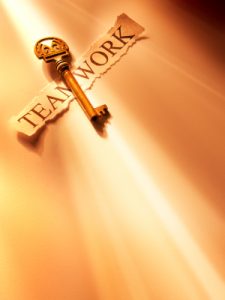What leader would not want to improve employee performance? Whether you have a great team or a not-so-great team, team members’ skills and attitudes can improve.
All employees come with their own set of strengths and weaknesses. As a leader, it’s your job to identify both.
By understanding team member strengths, you can identify strategies that improve employee performance and growth. This helps you place your people in roles that are well-suited to their passions and potential.
When identifying their weaknesses, you can provide them with coaching and training opportunities to help them grow and improve as employees and individuals. To do this, you must get to know your team members and provide them with opportunities to flourish.
Team building tools to track and improve employee performance
With proper team building tools and strategies, leaders can track employee performance improvement for better quality work and higher engagement.
Conduct regular reviews.
One of the most helpful strategies that you can implement right away is regular performance coaching reviews. Quarterly and yearly reviews are a must, but it’s more effective to meet with employees on a regular basis, such as bi-monthly or weekly.
In these sessions:
- Review what worked well and what didn’t work so well.
- Discover any performance hurdles so you can remove hurdles that frustrate improved employee performance.
- Review any weaknesses the employee is working to transform.
The only way that employees can improve is by knowing where they currently stand. They must understand what they need to work on. In order to get the most out of the reviews:
- Give the employee an opportunity think about their own performance before the two of you sit down.
- An outline of the meeting or a self-review sheet allow employees to reflect before you meet, giving you both the opportunity to hold a thoughtful conversation.
- When you do meet, make sure you provide examples of both the good and the bad in the employee’s performance.
- Talk about the employee’s long-term career goals so that the two of you can create a plan and track their actions for career advancement and growth.
Assess your work environment.
Your company culture and work environment go a long way in determining how to improve employee performance. This isn’t something that can just be assumed. It needs to be measured.
The principles of trust, interdependence, genuineness, empathy, risk and success are 6 Principles™ required for high performance work group dynamics and for a corporate culture to thrive. Leaders need to implement strategies to assess their current climate and make modifications as necessary.
The TIGERS Workforce Behavioral Profile™, for example, gives leaders the intelligence they need to assess the six principles in their workplace. From valid awareness, proven strategies emerge to provide training or workforce development interventions that produce measurable results.
The Workforce Behavioral Profile™ is not a one-time solution. Think of a profile as a bucket. Inside each bucket are three survey runs. The first is the benchmark survey followed by two follow-up, comparison surveys. The three survey methods gives leaders the realistic time to compare and track improvement over time.
Take three years or more to improve your workforce dynamic. This gives leaders the realistic time to track their team members’ progress. This includes building and maintaining a collaborative, innovative and scalable work culture as well as employee development improvement.
Encourage challenges.
Anxiety can cause a number of tense feelings or even adverse physical reactions for people. Anxiety can also be positive.
Anxiety is a fact of life. How you handle it is what’s important for success.
A 2017 study found that how respondents viewed their stressful events determined their performance. For example, people who viewed the event as a challenge gained energy from anxiety. Their performance improved. This is opposed to people who viewed the event as a threat. Their performance diminished.
The key step in powering through their anxiety was first addressing it. Respondents who identified their anxiety were able to move past that emotion and better devote their time and energy to solving the problem. This improved their performance during the situation.
As a leader, don’t discount the importance of stressful situations. Encourage your team members to view them as challenges that can be overcome.
Your team members are your most valuable asset. It’s essential that you understand where they sit in terms of both strengths and weaknesses. To improve employee performance, a number of factors apply. As a leader, you can encourage improved performances by implementing some team building strategies.
Helpful strategies include:
- Conducting regular reviews, such as weekly or bi-monthly, to ensure team members fully understand how they are performing and how they can improve;
- Assess your culture through the use of workforce behavior surveys; and.
- Encourage team members to view stressful situations as challenges, rather than threats.
With these, and other, team building and workforce development tools, leaders can help improve employee performances, overcome their weaknesses and reinforce their strengths.
Interested in digging deeper into this conversation?
Here are some additional resources to deepen your understanding:
- The 5 Must-Use Steps to Successfully Conduct a Performance Review With Employees
- Managing Employee Risk Demands Data, Not Guesswork
- A New Study Says Anxiety Can Help You Perform Better — But Only If You Know How To Respond To It
- The TIGERS Workforce Behavioral Profile. Download a sample survey report here.
Copyright TIGERS Success Series, Inc. by Dianne Crampton

Complimentary White Paper
About TIGERS® Success Series, Inc.
TIGERS® Success Series is a Bend, Oregon Management Facilitation and Team Improvement Consultant that helps committed leaders build more cooperation among employees and collaboration between departments for improved success.
We do this by deploying the TIGERS® team facilitation process that improves workforce behaviors that are anchored by trust, interdependence, genuineness, empathy, risk resolution and success. Providing diagnostics and customized, facilitated team interventions, you can improve both work culture and transform your adequate teams into exceptional ones.
We also license and train HRD Executives, Project Managers, Managers, and Trainers in the use of our award winning group facilitation resources. Invite us to present at your next business retreat or association gathering.
For more information, or to invite a proposal for you next corporate or association meeting call 1+ 541-385-7465.

Can you be more specific about the content of your article? After reading it, I still have some doubts. Hope you can help me.